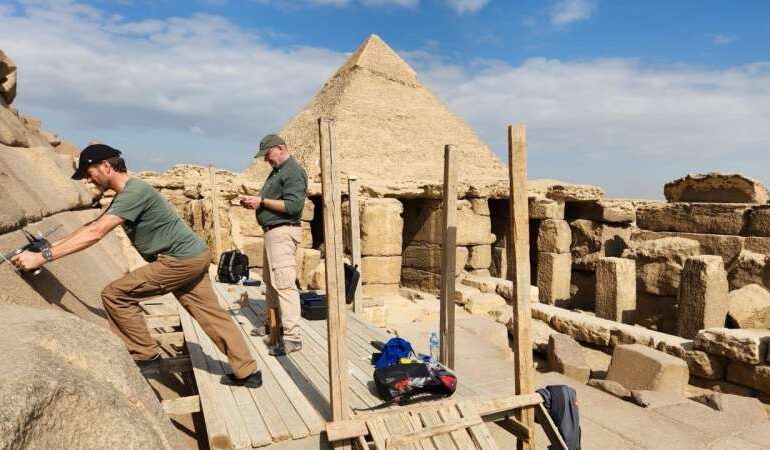Hidden Air Voids Discovered in Menkaure Pyramid Suggest New Entrance

Researchers from Cairo University and the Technical University Munich have unveiled two air-filled voids within the Menkaure Pyramid, the third-largest of the Giza pyramids. This discovery raises the intriguing possibility of a previously unknown entrance on the eastern side of the structure, which has long captivated scientists and historians alike.
The findings, published on November 7, 2025, in the journal NDT & E International, stem from the ongoing ScanPyramids research project. Utilizing advanced non-destructive testing techniques, including radar, ultrasound, and electrical resistivity tomography (ERT), the team successfully identified the anomalies located at depths of 1.4 meters and 1.13 meters behind the pyramid’s outer facade. Each void measures approximately 1 meter high by 1.5 meters wide and 0.9 meters by 0.7 meters, respectively.
Significance of the Discovery
The Menkaure Pyramid, standing over 60 meters tall, has presented researchers with challenges due to its unique construction. The eastern facade features exceptionally polished granite blocks, a characteristic that has led to speculation about a potential additional entrance. Researcher Stijn van den Hoven first proposed this idea in 2019, and the latest findings appear to lend credence to that hypothesis.
The precise identification of these air-filled voids was made possible through the innovative Image Fusion method, which integrates data from multiple measurement techniques. This approach not only confirms the existence of the anomalies but also enhances understanding of the pyramid’s internal structure without causing damage to the ancient edifice.
Expert Insights and Future Implications
Christian Grosse, a professor of non-destructive testing at TUM, highlighted the importance of this discovery. He stated, “Following the significant validation of a hidden corridor in the Pyramid of Cheops in 2023, ScanPyramids has once again succeeded in making an important finding in Giza. The testing methodology we developed allows very precise conclusions to be drawn about the nature of the pyramid’s interior without damaging the valuable structure. The hypothesis of another entrance is very plausible, and our results take us a big step closer to confirming it.”
The ongoing research into the Giza pyramids continues to excite both the academic community and the public, as it promises to deepen understanding of ancient Egyptian architecture and burial practices. As investigations progress, the potential for discovering new aspects of these monumental structures remains significant, with each finding contributing to the rich tapestry of history surrounding one of the world’s most iconic sites.






